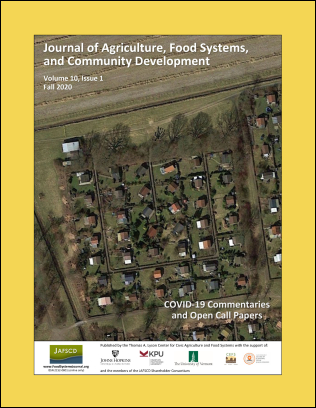Making seafood accessible to low-income and nutritionally vulnerable populations on the U.S. West Coast
DOI:
https://doi.org/10.5304/jafscd.2020.101.027
Keywords:
Fisheries, Food Systems, Seafood, Local Food, Food Access, Health, Low-income PopulationsAbstract
Along the U.S. West Coast, sustainable management has rebuilt fish stocks, providing an opportunity to supply nutrient-rich food to adjacent coastal communities where food insecurity and diet-based diseases are common. However, the market has not successfully supplied locally sourced seafood to nutritionally vulnerable people. Rather, a few organizations make this connection on a limited scale. We used a “positive deviant” approach to learn how these organizations’ efforts developed, how they overcame challenges, and what conditions enabled their interventions. We found that organizations in these positive deviant cases provided fish from a wide variety of species and sources, and distributed them through different channels to a diversity of end consumers. A key factor facilitating success was the ability to negotiate a price point that was both profitable and reasonable for organizations supplying nutritionally vulnerable or low-income consumers. Furthermore, securing access to grants overcame initial costs of establishing new supply channels. All cases highlighted the importance of individual champions who encouraged development and cultural connections between the initiative and the nearby community. Organizations overcame key challenges by establishing regulations governing these new channels and either using partnerships or vertically integrating to reduce costs associated with processing and transport. Oftentimes training and education were also critical to instruct workers on how to process unfamiliar fish and to increase consumer awareness of local fish and how to prepare them. These lessons illuminate pathways to improve the contribution of local seafood to the healthy food system.
Metrics
Downloads
Published
How to Cite
Issue
Section
License
The copyright to all content published in JAFSCD belongs to the author(s). It is licensed as CC BY 4.0. This license determines how you may reprint, copy, distribute, or otherwise share JAFSCD content.












